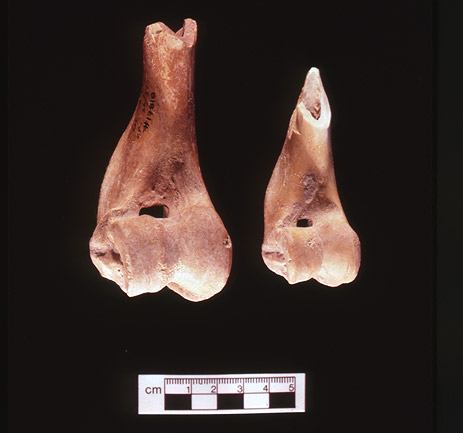Image Resource Bank
Image Gallery |  3 of 15
3 of 15 
Wild and Domestic Pig (Sus) Humerii

When humans began raising animals in captivity, they selectively bred them for traits that would make them easier to control, such as smaller body size. Through such selective breeding the domesticated animals eventually began to look different from their wild ancestors. Today, archaeologists compare the sizes of bones recovered from archaeological sites to bones from known modern and wild populations to determine whether the animals at the site were wild or domesticated. Both of these bones are humerii – bones from the upper forelimb. The larger bone on the left comes from a wild pig. The smaller one is from a domestic pig.
Name: Wild and Domestic Pig (Sus) Humerii
Material: Bone
Size:
Wild Pig:
Length: 10.5 cm (4.1 in)
Width: 5.2 cm (2 in)
Domestic Pig:
Length: 8.2 cm (3.2 in)
Width: 3.7 cm (1.5 in)
Date: Unknown
Place of Origin: Hachnebi, Turkey
Location: Chicago
Source and Registration#: Gil Stein, Director of the Oriental Institute

 Gil Stein
Gil Stein
Director of the Oriental Institute of the University of Chicago



